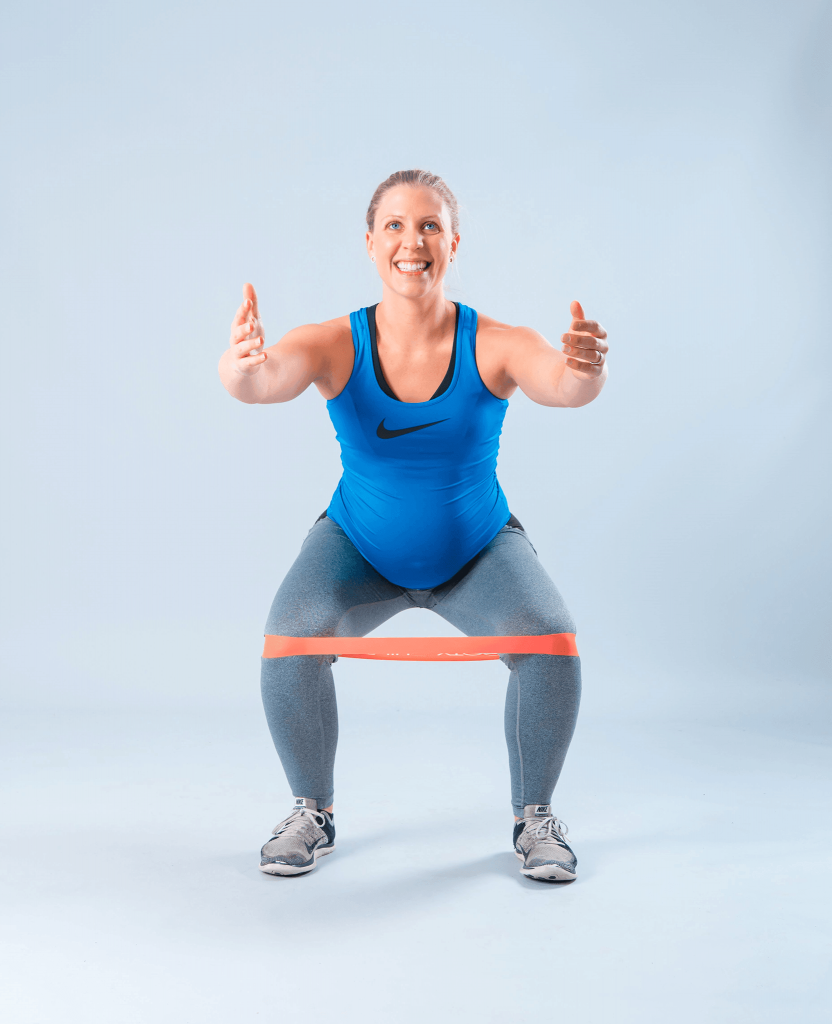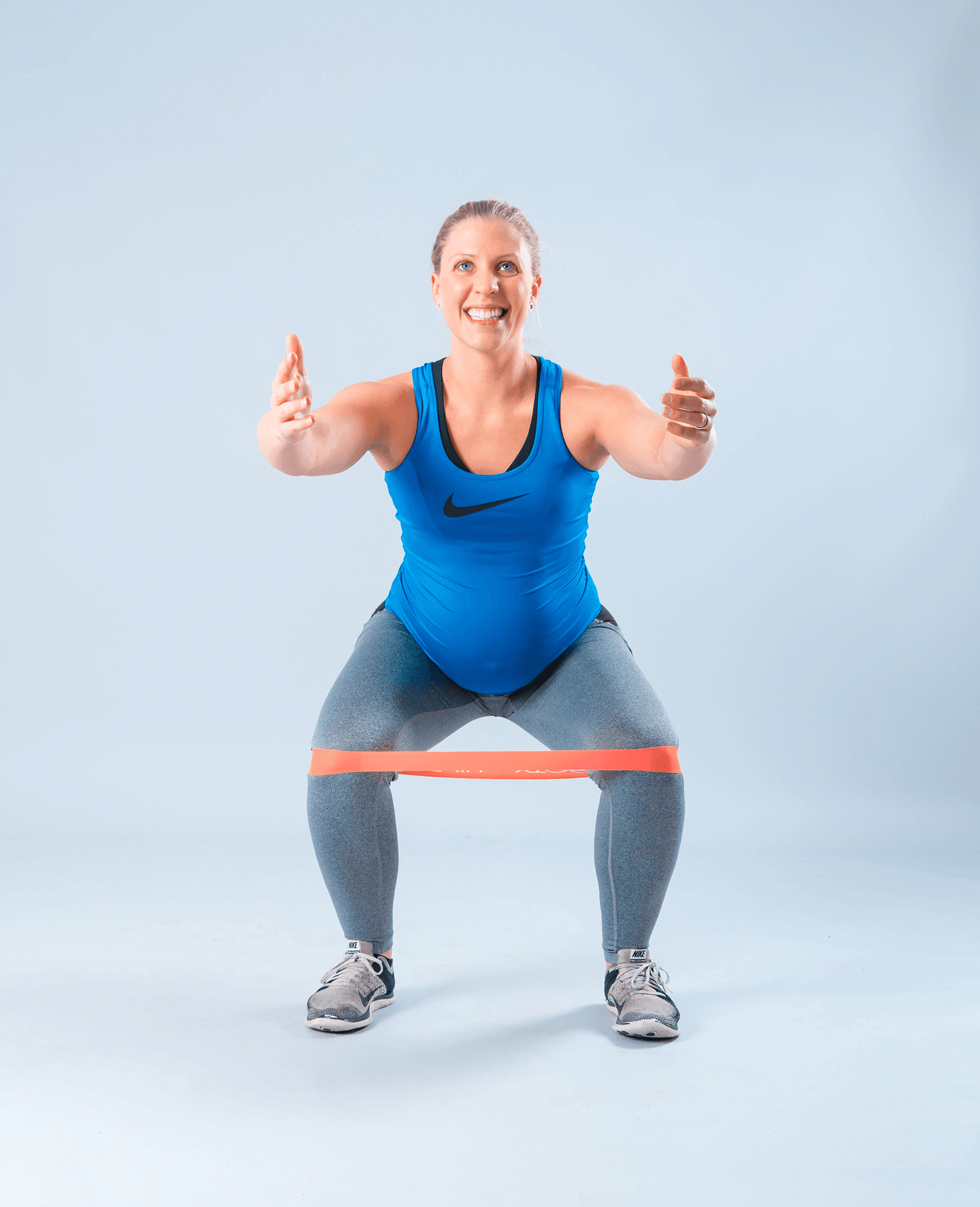For a long time, women were discouraged from exercising during pregnancy due to lack of research about pregnant women’s’ health. During the 1980s, women began to question these claims and more research was done in the field. Frida Johnson, physiotherapist specialising in pregnancy training, shares the dos and don’ts of exercise during pregnancy!
Can I Exercise Pregnant? How Exercise Benefits Pregnancy
Contrary to what critics previously had claimed, there are no dangerous effects from exercise during pregnancy, regardless of your training level. In fact, science has shown that training during pregnancy brings many positive benefits for pregnant women, reducing the risk of injury, illness and complications. Although the research has taken us this far, there are still many myths about training during pregnancy and many women are unfortunately advised to not do certain movements. This leads to lots of women feeling insecure about how to exercise during pregnancy and sometimes even makes women avoid exercise altogether. Don’t fall for it! If you are pregnant, exercise is one of the best things you can do for you and your child (ACOG Committee opinion 2002: ACSM 2009: Artal & O’Toole 2003: Caspersen, Powell & Christenson 1985: Josefsson & Bö 2008).
Due to physiological and hormonal changes during pregnancy, pregnant women have an increased risk of several diseases including:
- Gestational diabetes (high blood sugar)
- Gestational hypertension (high blood pressure)
- Preeclampsia
- Nausea
- Depression and postnatal depression
Women who exercise regularly during pregnancy reduce their risk for all of these conditions (Dekker & Sibai 2001: Hegaard, Pedersen, Nielsen & Damm 2007: Josefsson & Bö 2008: Lain & Roberts 2002).
How Exercise During Pregnancy Benefits You and the Baby
Exercise during pregnancy doesn’t only benefit the pregnant woman, but also the improves the health of the baby! The placenta, the organ that nourishes your growing baby, develops better when you exercise. This means that nutrition and oxygen exchange between the mother and child becomes more effective. Women who exercise regularly during pregnancy have healthier children at birth (Artal & O’Toole 2003: Clapp 2002: Irion & Irion 2010: Josefsson & Bö 2008: Pivarnk, Perkins & Moyerbrailean 2003).
In addition to this, women who train their pelvic floor muscles regularly and specific during pregnancy have a shorter birth with less complications and also have a reduced risk of urinary leakage (incontinence) during and after pregnancy. If you are planning on getting pregnant and want to keep exercising, it can be a good idea to contact a physiotherapist to practice “finding” the pelvic floor muscles so that you have better control of these during heavier resistance exercises.
Also, regularly training the core muscles before and during pregnancy reduces the risk for diastasis recti, a condition where a gap is created in the abdominal muscle. (Benjamin, van de Water & Peiris 2014: Boyle, Hay-Smith, Cody & Mørkved 2014: Mørkved & Bö 2014: Stafne, Salvesen, Romundstad, Torjusen & Mørkved 2012).

Use Pregnancy to Boost Exercise Performance!
There are so many cool changes in the body during the pregnancy that women can use to their advantage. For example, pregnant women get increased blood volume and more red blood cells, which gives them better conditions for improving their fitness. Studies have shown that women who perform cardio training regularly during and after pregnancy have a better fitness level than active women who have not been pregnant 40 weeks after childbirth!
So what type of exercise should you do? Training recommendations are in fact the same as for non-pregnant women, but the choice of activity sometimes needs to be adjusted to training forms with lighter loads, especially in the end of the pregnancy (ACOG Committee Opinion 2002: Clapp 2002: Josefsson och Bö 2008: Pivarnik, Perkins och Moyerbrailean 2003). Generally, the following recommendations apply:
For strength training:
- 7–8 exercises for each of the larger muscle groups per week.
- 1–3 sets per exercise.
- Heavy enough weight to do 8–12 reps, finishing 2-3 reps form failure.
- Exercises should focus on back and abdominal muscles, but can also include training of arm and leg muscles.
- Specific pelvic floor training 3-4 times a week. Maximum contractions for 3-8 seconds, repeat 10 times for 3 sets.

For cardio:
- The goal is to stay active 150 minutes per week.
- Expect some reductions in performance as pregnancy progresses.
- Aim to maintain performance rather than to set new records while pregnant.
- If you are pregnant and previously inexperienced in exercise, aim for shorter 15-20 minutes sessions 3 times per week, then increase to 30–45 minutes per session.
- Intensity should generally be moderate, on a subjective scale of 4-6 out of 10. Pulse cannot be used to reliably estimate intensity because it generally increases in pregnant women.
- If you are are previously experienced in high intensity training, you can can continue with this style of training as long as your gynecologist/obstetrician has approved it.
- Cardio training with more load like running and aerobic classes in the gym can be replaced by lighter training forms like biking and water aerobics especially in the end of the pregnancy.
During pregnancy it is extra important mindful of hydration during sessions and nutrition around exercise sessions.
Can Exercise Affect Pregnancy? What Should You Avoid?
Exercising cannot lead to miscarriage. Miscarriage before week 13 is very common and cannot be induced or prevented. As long as the exercise is performed without any symptoms of pain or leakage, it is okay to perform the activity.
Women should avoid exercises with risk of falling or impact to the baby, like contact sports. Pregnant women should also avoid diving sports because of the changes in carbon dioxide levels. It is not dangerous to sweat and get warm, but pregnant women should avoid exercising in extremely hot climate.
From week 16, women are advised to not perform exercises while laying flat on your back (i.e. the “supine position”) because the uterus can press against a large blood vessel of the heart, the vena cava This limits blood flow and can cause hypoxia so that the woman may become dizzy and faint.
To be on the safe side, exercise should always be interrupted if vaginal bleeding, dizziness, headache, abnormal breathlessness, chest pain, pain or swelling of the calves or decreased fetal movements is experienced. In these situations, contact a health care professional immediately (ACOG Committee opinion 2002: ACSM 2009: Artal & O’Toole 2003: Clapp 2002: Iron & Iron 2010: Josefsson & Bö 2008).
Here’s a recap of what to consider with exercise and pregnancy:
- There are many positive effects from exercise during pregnancy and it prevents complications, injuries and illness. Both you and your baby will benefit from you exercising regularly during pregnancy.
- Exercising during pregnancy is not dangerous! If the exercise feels good and is performed without any pain, leakage or discomfort, it’s all good. So get lifting!
- After week 16, women are recommended to avoid exercises in a laying flat on your back down position because of risk of vena cava compression. It is therefore better to perform abdominal exercises sitting, laying on the side sittande, or standing after week 16.
- Regularly pelvic floor muscle training during the pregnancy prevents urinary leakage during and after the pregnancy and also reduce the risks for complications and injuries during birth.
- Women who regularly perform cardio training during and after pregnancy have a better fitness level than non pregnant women 40 weeks after the delivery.
If you live in Sweden and want to learn more about exercise during and after pregnancy, Frida Johnson has a course available where you get to practice specific exercises and get more details on the theory behind training during and after pregnancy. Check it out at http://fysiofrida.se.
Check out our workout StrongWoman, the empowering workout program for women who want strength, curves & well-being.
Written by Frida Johnson, licenced physiotherapist
Edited by Artin Entezarjou, M.D. & Omar Kaakati, M.D.




